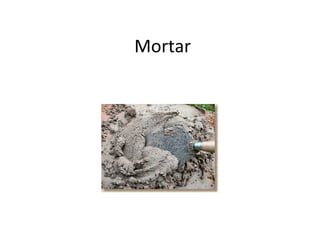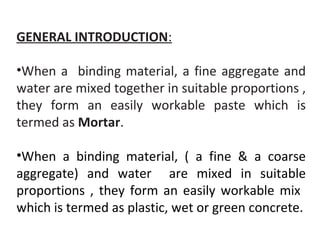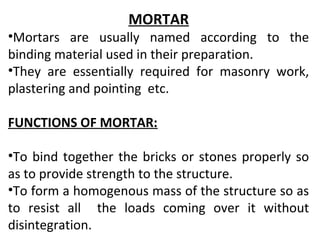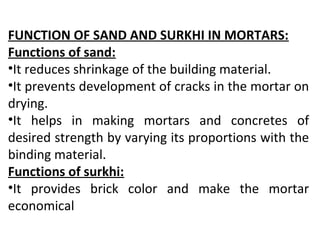The document discusses different types of mortar used in construction. It defines mortar as a mixture of a binding material, fine aggregate, and water. Common binding materials include cement and lime. Mortars are classified by their binding material, such as cement mortar, lime mortar, and mud mortar. Specialty mortars include fire resistant mortar, lightweight mortar, and chemical resistant mortar which are formulated for specific applications. The document outlines the proper mixing and application of different mortars.






























